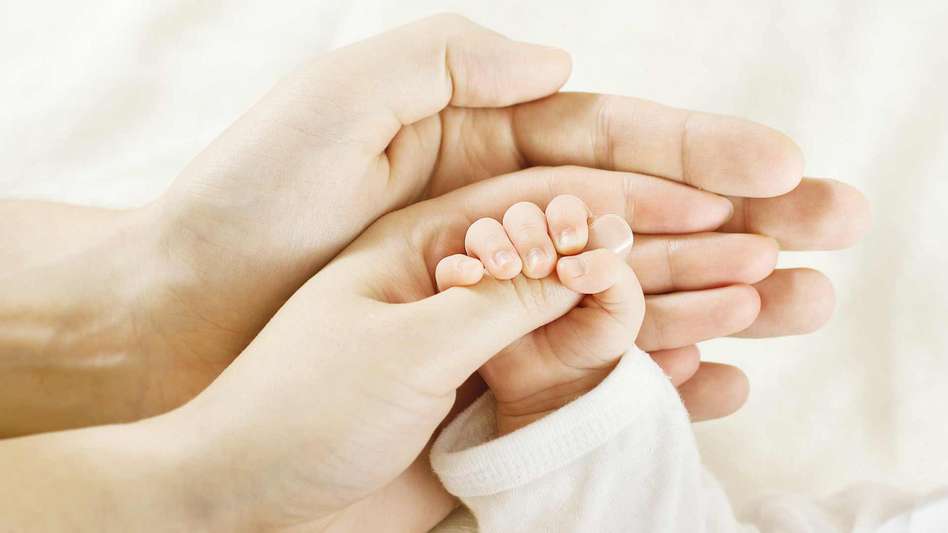Congenital hip dysplasia in babies, medical negligence claims

Congenital hip dysplasia is a condition some babies are born with. It effects the hips, and can cause problems in later life if untreated. Fortunately, congenital hip dysplasia is treatable through surgical and non-surgical treatment.
- Medical negligence claims - congenital hip dislocation
- What is congenital hip dysplasia?
- Types of hip dislocation
- What causes congenital hip dislocation?
- Signs and symptoms of congenital hip dislocation
- Congenital hip dislocation terminology
Medical negligence claims - congenital hip dislocation
Doctors should be able to diagnose congenital hip dislocation during the new-born examination or the 6-8 week post-natal check. Early diagnosis and proper treatment are important to help the baby recover, develop and enjoy as full a range of movement as possible in their hips. Babies with congenital hip dislocation may need treatment to try and resolve the problem. Failure to detect congenital hip dislocation and start treatment early can lead to long-term health problems.
Claims for congenital hip dislocation usually arise as a result of delayed diagnosis of the condition. You might have a claim for negligence if your baby:
- suffered unnecessary pain or required surgical treatment because of the delayed diagnosis
- faces long-term effects of hip dislocation because of the delayed diagnosis.
If you are concerned about the standard of care your baby received during diagnosis or treatment of their hip dislocation, and think this might have caused a problem, talk to our medical negligence claims specialists. We’ll listen to your concerns, and help you find out what happened and why.
What is congenital hip dysplasia?
Congenital hip dysplasia (also called congenital hip dislocation) is an abnormality of the hip joint. It can cause partial or total dislocation of the hip.
The NHS states that long-term effects of untreated congenital hip dislocation may include:
- developing a limp
- painful, stiff joints (osteoarthritis)
- hip pain.
Babies with congenital hip dislocation are born with an unstable hip. This can affect their mobility and range of movement in the hip. Normally, this condition shouldn’t interfere with babies learning to crawl or walk.
Fortunately, congenital hip dislocation is quite rare and it is treatable. It affects about 1 or 2 out of every 1,000 babies born in the UK.
Types of hip dislocation
Hip joints have a ‘ball and socket’ structure, which attaches the thigh bone to the pelvic bones. When the joint develops normally, the round top of the thigh bone (femoral head) forms the ‘ball’ and the round cavity in the hip (the acetabulum) forms the ‘socket’. The ball of the femur fits within the cavity, connected by muscles and other structures, forming the hip joint. This lets the hip joint move normally.
Congenital hip dislocation can be mild or severe. The severity of the condition depends on the extent and effects of the abnormality in the hip joint.
Mild hip dislocation is associated with a problem with the ligaments which hold the joint in place. The hip may partially dislocate if these supporting structures around the hip joint don’t form properly.
More severe hip dislocation is associated with abnormal development of the bones which form the hip joint. The hip may totally dislocate in this situation. For example, the round cavity in the hip might be too shallow for the ball of the femur to fit snugly into it. In other cases, the ball of the femur may be mis-shapen.
What causes congenital hip dislocation?
Doctors don’t know exactly what causes congenital hip dislocation, and the NHS advises that it’s not preventable.
However, certain risk factors are linked to an increased chance of a baby being born with congenital hip dislocation. These include:
- if the baby is born in the breech position (bottom first)
- when there is a family history of hip problems
- if you are expecting twins or multiple births
- if your baby is born prematurely
- if it’s your first baby.
If your baby is at risk of being born with hip dislocation, your doctor/midwife may advise you of this during your antenatal care. However, as there is no way of being absolutely sure of this before the baby is born, the doctor or midwife will ensure that your baby’s hips are examined in the immediate period following birth.
Diagnosing congenital hip dislocation
Congenital hip dislocation can’t be prevented, so it’s very important that it’s diagnosed as quickly as possible after the baby’s birth. A prompt diagnosis gives the baby the best chance of recovering and enjoying a normal range of motion in their hips. Babies should be checked for signs of hip dislocation as part of their routine care.
Your baby will be checked at an early age for signs of hip dislocation. Usually, the first check takes place in the hospital, very soon after delivery. The checks are in place to diagnose hip dislocation early and start treatment as soon as possible.
A doctor or midwife should check your baby’s hips within 72 hours after birth. This is part of the newborn examination and shouldn’t cause your baby any discomfort. The person performing the test will gently move baby’s hips to check for early signs of hip dislocation, such as instability of the hip joint. Your healthcare professional should also check how the baby was delivered and ask you if hip dislocation runs in your family.
This is a routine examination. It would be negligent of your care providers not to carry out the examination around the time of your baby’s birth. You should be told if there are any abnormal findings. If a problem is identified during the check, you should be advised of the next steps and action should be taken to make a firm diagnosis and to rectify the problem.
Your baby’s hips should also be checked at the 6 - 8 week post-natal check. This is a standard check to make sure your baby is healthy. It’s another opportunity for doctors to diagnose hip dislocation which may not have been evident at the time of your baby’s birth.
If the doctor identifies a possible problem, they may refer your baby for more tests, such as an x-ray or ultrasound scan.
Signs and symptoms of congenital hip dislocation
The early checks of a baby’s hips are designed to ensure early diagnosis of hip dislocation.
However, hip dislocation may be diagnosed later in your child’s development. The NHS states that parents should contact their GP if they notice that their baby:
- has restricted movement in one leg when their nappy is changed
- has one leg which seems longer than the other
- has uneven skin folds on their buttocks/thighs
- lets one leg drag behind the other when they crawl
- develops a limp, walks on their toes or seems to have an abnormal gait.
Congenital hip dislocation terminology
Below is a useful glossary of terms which you might hear in connection with congenital hip dislocation.
Where appropriate, these terms are explained specifically in the context of congenital hip dislocation.
- Congenital: a condition that a baby is born with.
- Dysplasia: abnormal development of tissue (such as bones and muscles) or an organ. In the case of congenital hip dislocation, it means an abnormal development of the hip joint
- Dislocation: an abnormal separation of a joint. In the case of congenital hip dislocation, it may mean partial or total dislocation of the hip joint
- Congenital hip dysplasia/dislocation: is a condition where the ball of the baby’s femur does not properly sit within the hip socket. The extent of hip dislocations vary.
- Hip Subluxation: is a condition in which the hip joint is partially, but not fully, dislocated. This happens when the ball of the femur does not fully fit within the hip socket.
Disclaimer
All content is provided for general information only, and should not be treated as a substitute for the medical advice of your own doctor, any other health care professional or for the legal advice of your own lawyer. Tees is not responsible or liable for any diagnosis made by a user based on the content of this site. Tees is not liable for the contents of any external internet sites listed, nor does it endorse any service mentioned or advised on any of the sites. Always consult your own GP if you're in any way concerned about your health and your lawyer for legal advice.
Call for a FREE initial consultation on 0800 013 1165
Tees is here to help
We have many specialist lawyers who are based in:
Cambridgeshire: Cambridge
Essex: Brentwood, Chelmsford, and Saffron Walden
Hertfordshire: Bishop's Stortford and Royston
But we can help you wherever you are in England and Wales.
Chat to the Author, Sarah Stocker
Associate, Medical Negligence, Cambridge office
Meet Sarah
- Areas of expertise
- Accreditations
- Testimonials
Mr E
Cambridge
'I was extremely satisfied with the overall professionalism of the people I dealt with, particularly of Sarah Stocker, who acted as my usual contact. I needed personal and empathetic handling of my case and that is exactly what I received'
Georgia Rebane
Peterborough
'Sarah really went the extra mile to help me try to understand the legal process. I've never been through anything like this before, so was very grateful to have someone as caring as Sarah to help get a fair outcome'
Mrs V
Chelmsford
'Sarah Stocker explained my medical negligence case, and the likely outcome, very clearly. She kept me fully informed throughout the process and was extremely compassionate and professional. My claim was successfully settled and I'm extremely grateful for the help Sarah gave me and my family'
Barry Skingley
Saffron Walden
'I would recommend Sarah Stocker to anyone who has a similar claim. I could not fault any part of my negligence claim. It was carried out professionally and in a sympathetic way. Throughout the process I was kept informed at every stage. The financial settlement was well above my expectations'
Mrs. C
Bishop's Stortford
'Sarah Stocker’s input into my case was of the highest standard. She was supportive, caring and empathetic. She informed me of details of my and case and gave me feedback as soon as she got it. There was always good communication, Sarah would spend time in phone calls explaining the process. She would always follow up with hard copies on how my case was progressing and she accessed excellent expert reports from the medical profession. Sarah gave very good advice, support and guidance'
Mrs. C
Dunmow
Sarah Stocker explained my medical negligence case, and the likely outcome, very clearly. She kept me fully informed throughout the process and was extremely compassionate and professional. My claim was successfully settled and I'm extremely grateful for the help Sarah gave me and my family.


